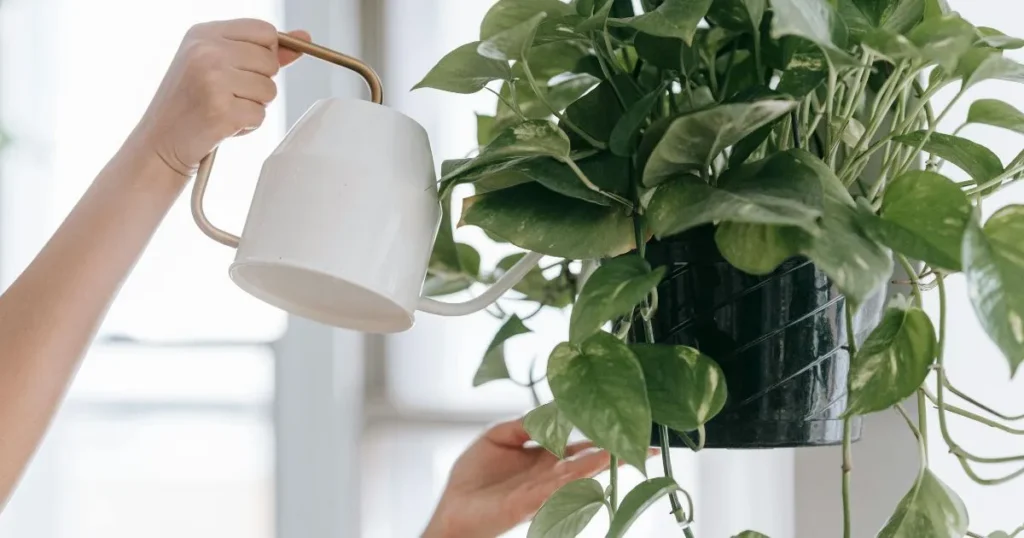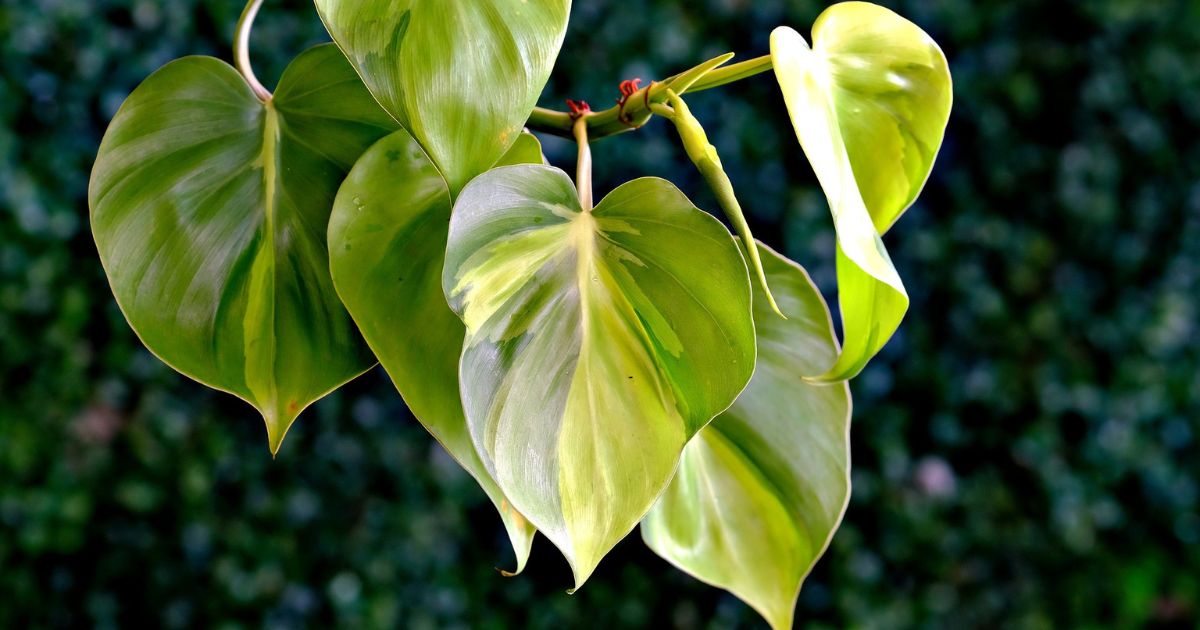Bringing a Brasil Philodendron into your home is like inviting a little piece of the tropical jungle indoors. Known for its stunning green and lime-yellow leaves, this plant, scientifically known as Philodendron hederaceum ‘Brasil’, is an eye-catching addition to any indoor space. Not only is it beautiful, but it’s also a relatively easy-care plant, ideal for beginners and experts alike. If you’re just starting your indoor plant journey or looking to enhance your plant collection, the Brasil Philodendron is an excellent choice. This guide will walk you through everything you need to know to help your Brasil Philodendron thrive.
In This Article
What is the Brasil Philodendron?
Quick Facts About Brasil Philodendron
| Botanical Name | Philodendron hederaceum ‘Brasil’ |
| Family | Araceae |
| Plant Type | Tropical, Vine |
| Maximum Size | Up to 10 feet indoors (with support) |
| Light | Bright, indirect sunlight |
| Soil | Well-draining potting mix |
| Watering | Moderate; allow soil to dry partially |
| Toxicity | Can cause harm to pets and humans if consumed |
Brasil Philodendron is a native of the tropical rainforests in Central and South America, thriving in warm, humid climates. This plant has become popular among indoor plant enthusiasts, not just for its resilience but also for its lush, trailing vines. With a little care, you can bring a tropical feel to your home without the high maintenance associated with many other exotic plants.
Why Add a Brasil Philodendron to Your Space?
Adding a Brasil Philodendron to your home is not only about aesthetics. This plant brings a multitude of benefits beyond its looks.
- Visual Appeal: The heart-shaped leaves with green and yellow variegation add a vibrant, unique touch to any room.
- Air Purification: Like other philodendrons, the Brasil Philodendron helps improve indoor air quality, filtering out toxins and refreshing the air.
- Low Maintenance: With minimal care requirements, this plant is perfect for beginners or those who want a beautiful but easy-to-maintain plant.
Setting Up the Right Environment
Creating the ideal environment for your Brasil Philodendron is the key to ensuring it thrives indoors.
Ideal Light Conditions
Proper lighting is essential for the health and coloration of the Brasil Philodendron. This plant loves bright, indirect light, which is similar to the filtered sunlight it receives in its natural habitat.
- Avoid Direct Sunlight: Too much direct sun can scorch the leaves, causing them to lose their vibrant color.
- Ideal Placement: Place your plant near an east or north-facing window, where it can receive gentle light without being exposed to harsh sun. If bright, natural light is limited, consider using grow lights to supplement.
Temperature and Humidity Needs
As a tropical plant, the Brasil Philodendron thrives in warm, humid environments.
- Temperature Range: The ideal temperature for this plant ranges between 65–80°F (18–27°C). Keep the temperature steady around your plant; sudden changes can cause it stress and affect its health.
- Humidity Levels: High humidity, around 60–70%, is optimal. You can increase humidity by misting the leaves regularly, placing a water-filled pebble tray under the pot, or using a humidifier in the room.
Best Soil and Potting Options
Proper soil and potting choices will help your plant avoid common problems like root rot.
- Soil Mix: Use a well-draining potting mix to prevent water from sitting around the roots. A combination of potting soil, perlite, and orchid bark is ideal as it allows for aeration and drainage.
- Pot Selection: Use a pot with drainage holes to prevent water accumulation at the bottom. Terracotta pots are a good choice because they allow excess moisture to evaporate, but any container with proper drainage will work.
Watering Guide for Brasil Philodendron
Getting the watering routine right is essential to keep your Brasil Philodendron healthy and thriving.

How Often to Water
Brasil Philodendrons enjoy moderately moist soil, but overwatering can be problematic.
- Watering Frequency: Water once a week during the growing season (spring and summer) and reduce frequency in fall and winter. Feel the top inch of the soil : if it’s dry , it’s time to give your plant a drink.
- Signs of Overwatering: Yellowing leaves and mushy stems are common signs of overwatering. If you see these signs, adjust your watering routine and ensure the soil has adequate drainage.
Effective Watering Tips
- Water Temperature: Room-temperature water is the best choice to keep the plant’s roots comfortable and avoid any shock.
- Drainage Considerations: Ensure excess water drains completely. If using a saucer under the pot, empty it after watering to prevent root rot.
Fertilizing for Optimal Growth
Fertilizing can help your Brasil Philodendron grow fuller and maintain its vibrant colors.
Best Fertilizers
- Balanced Liquid Fertilizer: A balanced liquid fertilizer (20-20-20) diluted to half strength works well. Feed the plant once a month during spring and summer for optimal growth.
- Organic Fertilizer Alternatives: Compost or worm castings can be mixed into the soil for a more organic approach. These provide slow-release nutrients that are beneficial for long-term soil health.
Pruning and Propagating Brasil Philodendron
Routine pruning will keep your plant healthy and promote new growth, while propagation is a fun way to create new plants.
Pruning Tips
- When and How to Prune: Trim back yellow or damaged leaves to help the plant conserve energy. Make sure to use clean, sharp scissors and trim just above a node for a healthy cut. The ideal time for pruning is usually in spring.
Propagation Techniques
Propagation is simple and rewarding with the Brasil Philodendron. Here’s a step-by-step guide:
- Select a Healthy Stem: Choose a stem that has more than two nodes for the best results.
- Make a Clean Cut: Cut just below a node, make sure you have a few leaves on the cutting.
- Place in Water or Soil: Place the cutting in a jar of water or directly into moist soil. If in water, wait until roots are 1–2 inches long before transferring to soil.
- Transplanting: Once roots form, you can plant your new philodendron in a pot with well-draining soil.
Common Pests and Diseases
Though generally hardy, Brasil Philodendrons may occasionally encounter pests or health issues.
Identifying Common Pests
- Spider Mites, Mealybugs, and Aphids: These small insects can cause damage, resulting in yellowing leaves or a sticky residue on the plant.
Treatment and Prevention
- Neem Oil: Use neem oil as a natural pesticide, spraying the leaves every two weeks if pests are present.
- Regular Cleaning: Wipe down the leaves with a damp cloth to deter pests and get rid of dust.
Troubleshooting Common Issues
Brasil Philodendrons are generally easy to care for, but some issues can arise. Here’s how to address them:
- Yellow Leaves: Yellowing leaves may indicate overwatering or inadequate light. Verify the soil moisture then consider moving the plant to a brighter spot.
- Leggy Growth: If your plant appears thin or “leggy,” it may not be getting enough light. Move the plant to a spot with more light, or consider supplementing with grow lights for extra support.
- Brown Leaf Tips: This could mean that your plant is experiencing low humidity levels or hasn’t had enough water. Boosting humidity levels or adjusting your watering routine can make a big difference.
Decorating Ideas for Brasil Philodendron Indoors
Brasil Philodendrons’ cascading vines make them versatile and beautiful in various indoor displays.
- Placement Ideas: This plant looks wonderful on high shelves, in hanging baskets, or cascading from plant stands.
- Styling Tips: Pair the Brasil Philodendron with pots that match your decor. The trailing vines make it an attractive focal point, adding a natural touch to any room.
FAQs
Q: How often should I water my Brasil Philodendron?
A: Water if the top inch of soil is dry, usually once a week. Adjust frequency in cooler seasons.
Q: Can Brasil Philodendron tolerate low light?
A: Yes, but bright, indirect light is ideal for healthy, vibrant growth.
Q: What type of soil is best?
A: A well-draining mix of potting soil, perlite, and orchid bark works well.
Q: Is Brasil Philodendron safe for pets?
A: No, it’s toxic if ingested, so keep it out of reach of pets and small children.
Q: How do I propagate my Brasil Philodendron?
A: Take a stem cutting with a node, place it in water or soil, and wait for roots to form before potting.
Conclusion
For a charming and easy-care addition to your indoor space, choose the Brasil Philodendron. Its vibrant green and yellow leaves, coupled with low-maintenance requirements, make it a favorite among plant enthusiasts of all levels. By following these care guidelines—providing the right light, soil, watering, and occasional pruning—you’ll have a healthy, thriving plant that brings a touch of tropical beauty to your home.
Are you ready to add this gorgeous plant to your collection? Whether you’re a beginner or a seasoned plant lover, the Brasil Philodendron is sure to reward you with lush foliage and easy care. Let your indoor garden flourish and enjoy the vibrant energy this plant brings to your space.

